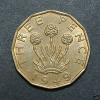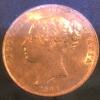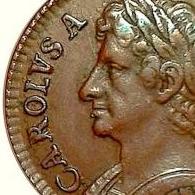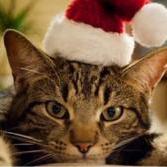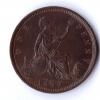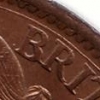|
|
The current range of books. Click the image above to see them on Amazon (printed and Kindle format). More info on coinpublications.com |
|
|
Leaderboard
Popular Content
Showing content with the highest reputation on 06/11/2023 in Posts
-
1 pointI posted this in the general British coin forum but noted with interest that 2 days ago Noonans sold at auction what is evidently an extremely rare decimal coin. It may be the rarest of all currency from the decimal era! This would be the 2009 10 pence, uncirculated currency piece with the lion reverse of 2007 and earlier. Out of curiosity I looked it up and could only find record of a different piece sold at London Coin auctions about 8 years ago and then vague mention of one other specimen from a 2008 (!) currency specimen set, I think it said for babies born that year or similar. Regardless, I didn’t even know this coin existed - maybe because I have focused on the later milled pre-decimal coins of 1837-1970. Do readers know more?
-
1 pointI wanted to pick your collective brains on the “onc tenth” florins of 1853-1860, and possible theories on how the error came about. 1. Is it a “c” or an “e” with the oblique bar missing? A comparison of the “e” and “c” on the obverse seems to show a slight difference in the width of the letters. 2. If it’s an “e” with the bar missing, is this due to die fill? The oblique bar is very fine, so this could be a possible explanation. But if so, why does it only affect the “e” in “one” and not that in “tenth” (or the “e” in “One florin”, for that matter)? 3. Whether it’s a “c” or an “e” with a missing bar, could it be that a wrong or faulty puncheon was chosen when sinking the die? But again, why only the “e” in “one”? 4. Is it possible that there were puncheons for the entire word “one”, one of them was faulty, and that this was occasionally used over the course of 7 years when sinking new reverse dies? Each pair of dies produced only around 25,000 coins at the time, so the 1853 florin alone (mintage nearly 4 million) would have required upwards of 150 dies. 5. If 4 is the correct explanation, it could also explain the sudden disappearance of the error in 1860 – the faulty puncheon was detected and destroyed, or it wore out and was discarded. 6. A quick survey of auction archives would suggest that the error is more common than might be inferred from Bull. ESC 7th edition Heritage London Coin Auctions Noonans Spink 1853 “scarce” 2 3 1 1 1854 “4 seen” 1 9 1 1 1855 “5 seen” 1 1856 “7 seen” 1 1857 “6 seen” 1 1858 “4 seen” 1859 Not recorded 1860 “5 seen” 2 2 Number of examples of “onc tenth” florins offered at four auction houses between 2010 and 2023. With the exception of London Coins, most were not catalogued as “onc”. Any thoughts or insight on this would be much appreciated.
-
1 pointAfter exhaustive research, I have decided it's time for me to pass on my knowledge of how to make sense of Ebay listings. (Apologies if this has already been done.) "Some luster" (sic) Polished flat. "Collectable condition" Flat "Unsorted" Sorted "Unsearched" All valuable coins spotted and removed "Mint error" Hit with hammer "Rare" Common "Very rare" Very common "Great patina" Dug up "Proof" Worn "Wonderful natural toning" Terrible artificial toning
-
1 pointMostly their own offerings produced in the last couple of decades. https://www.royalmint.com/collect/auction/auction-archive/
-
1 pointVarieties are (or can be) difficult to weigh up in terms of their noteworthiness. I agree with @Mr T that Freeman is probably the very best source for modern milled bronze, although he starts at 1860 for pure currency coins, at the commencement of the bronze era. All his varieties are taken very seriously, whereas some of the more recently discovered ones never seem to resonate with dealers and collectors - minute date width differences+ being an obvious example. As far as current values you need a decent website, as book values soon become out of date. You might find this useful, possiby - link
-
1 point
-
1 pointI've just ordered a 4 tray drop door mahagony cabinet from Rob Davis - specifically for patterns and proofs. Just £165. All recesses 45mm, need a decent size. Will be quality, I'm certain. link
-
1 pointNoonan's sold this coin yesterday (the 2009 10 P mule) and wondered if anybody knows more of it. This is not heralded the way the 1983 2 New Pence "error" has been but evidently is much rarer - at least I believe this to be so. Do any readers know differently? When I googled it, I found only the London Coins specimen which had a scratch and one other reference that I have now forgotten. Was there any alloy change or other way of descriminating the 2007 vs. 2009 mule coins? And what would be the explanation for the mule, becuase I would have thought there would be more specimens out there if it had been a wrong reverse die. I think I remember reading that one of the 10 P coins had been found in a specimen currency "Anniversary" set or some such. I would think this coin would get a lot more attention or "play" as kids say these days...
-
1 pointDerek is still very active on facebook, and has challenged my views in public threads on more than one occasion- although it always ends amicably/humourously. I did once ask him why he never posts on here anymore, but he never responded.
-
1 pointAnd....a broad sail veiled head 1894 pattern went for ~10K dollars (from memory) a few years ago at Stacks and Bowers, part of a fantastic bronze penny collection. London Coins had previously sold a nice one for £1600 hammer back in 2006. Which all means that if anyone wants to form a veiled head penny pattern collection (2 coins), they've missed the boat by about 15 years. If anyone on here bought that 1894 pattern from LC, well done!
-
1 point
-
1 point
-
1 pointAnother potential 1817 variety. E/E/R in DEF My example below and a member of @AJWcoins facebook group example to follow.
-
1 pointI bought one in a Bloomsbury sale (2005-7 but can't find the relevant catalogue at the moment). It was clearly a broken punch or filled die as there was a trace of the missing bar. I returned it not as described because it wasn't a genuine ONC as claimed.
-
1 pointThey are very interesting figures from those Auction Houses. I like the idea of a puncheon with the word "onc" being made by mistake and then worn out or destroyed, but there must have been a lot of them for that to happen over 7 years, so i do not know what to think. As for the amount of 1854 florins in your survey compared to other years, then i would say it could be because the other years with "onc" in fine condition or worse, do not get sold at auction because of the much lower value than the 1854 florin. To be honest, i had not really given too much thought how this might have happened before your post. Interesting subject though David.
-
1 point1826 penny inverted FAKE. Thought i would share this just incase anyone sees one for sale and before they perhaps pay to much for one ,believing it to be genuine. I could not tell looking at one ,no signs of anything to the outside edge or inner rim ,right weight ,size , looks genuine. BUT i had two and found pictures of another ,they are all the same with the same bag marks etc and could easily be passed off as genuine if you are not able to compare with another. Similar to the 1905 Half crowns that were done in the seventies and look real but all the same.
-
1 pointI've a large bag of tulip bulbs in the shed. A grand a piece to anyone who wants some.
-
1 pointI have just listed on ebay an 1874 9+K, along with a few other rare date halfpennies. They can be found at: https://www.ebay.co.uk/sch/i.html?item=285309790751&_ssn=1970kit&_sop=10 Maybe of interest to some forum members?
-
1 pointI know about a set that might qualify which would be the 1922/1924 Satin Specimen Set. I have always wondered if the mintage is really 2, and why or how did the Pretoria Mint get hold of these two sets...
-
1 pointThat will be the F33 ‘N over inverted N’, you have it in your Freeman re-print Richard and it is in the Gouby update too. Other than the photo of a worn second that Larry has previously shown, I haven’t seen another despite several years passing and it does seem to remain very rare indeed. Still in my collection of course. As regards the ‘rarest’ coin in my penny collection I have several that are still in the ‘single figures known’ category from the Rarest Pennies database, with the above F33 and an F15 BRTTT perhaps the rarest. In my hammered collection I do have two of the four known 1558 dated mm lis Elizabeth Ist pennies, one being the Comber example. Jerry
-
1 pointI think possibly that my rarest coin is an 1887 6d identified as one type among very many patterns that exist for that year (and none have more than subtle differences): As you can see, the first 8 is struck over another 8; however the feature that first drew my attention to it (and why I bought it) is the big gap between the second 8 and the 7. The inner circles of the 8 point directly to a space, but on the normal example they are to the left of a bead. The tail of the 7 points exactly to a bead, rather than to the left of it.
-
1 pointMy rarest coin is a 1922 penny obverse 4+ reverse C - unrecorded and the only specimen I've ever seen come to market. I have a photo of what appears to be a BU specimen of the same die pairing but I can't find any confirmation of its existence.
-
1 pointThat's a tricky one - where do you draw the line as regards varieties? I have some pennies that are not listed as 'varieties' yet, but more may exist, but for the moment, there are but one example. Are these 'desirable' rare coins? Not yet, they're not. I found a 1862 'B' halfpenny in a tin of crap coins a few years ago. That was rare and fun!
-
1 pointI had a crack at the 1924 gold 3d in the recent Sincona auction (lot 1931). This was rated R7. Sadly it got away; but I do own another 3d, different date, nearly as rare - in nickel. I would never ever sell it! (Though I might be tempted to swap it for the gold one … ).
-
1 point"Selling for less than book price" going for slightly less than a coin 3 grades higher "from my Grandfathers collection" Modern fake
 Coinpublications.com
Coinpublications.com






